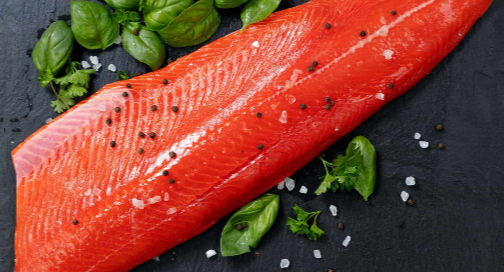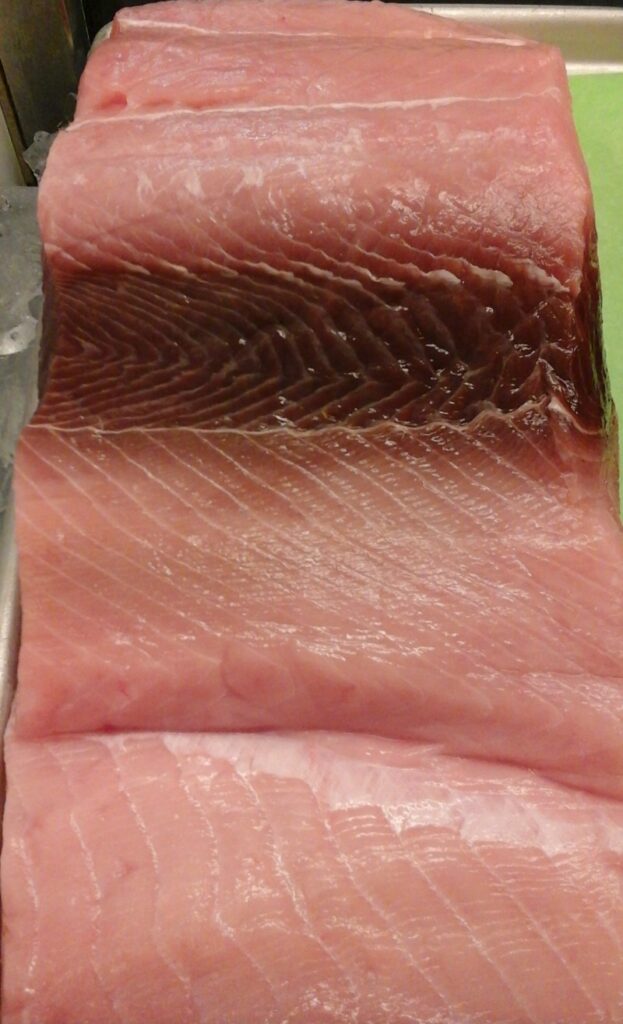Tuna, as if it were just caught

Because we adhere to the highest quality standards, we choose special processing methods. Our tuna is frozen immediately after catch in a freezer at -60°C. Then our “Ultra Frozen Tuna” becomes world famous for its exceptional quality
We continuously work on innovation and sustainability together with our suppliers—from whom we buy directly from the source—and together with our customers. This allows us to become trendsetters in the realm of high-quality fish and sushi and ensures our partners that they will always receive the best fish for the best price and under the most sustainable conditions.
We will be happy to talk to you about your specific product wishes that are currently not in our assortment. From our wish to supply and help our partners where possible, we like to think with you to see how we can help you. Provided we can guarantee the quality you expect from us, but that goes without saying.
Gifts Under $200
Fresh vs Frozen Foods
Fresh vs. Frozen Foods: What is Healthier?
Many people don’t want to walk down a cold hallway. They think they just learned about processed and conservative foods that are inferior to canned fruits and meats. That was true twenty years ago, but who remembers Ellio’s pizza? – The food industry has advanced a lot.
Our health-conscious culture is pushing food brands to create healthier frozen meals, and the industry has responded. Plus, some research suggests that buying frozen foods is even healthier than buying fresh fruits and vegetables. Let’s see why.
Contrary to what you might think, frozen fruits and vegetables are healthier, higher quality and cheaper. Moreover, they automatically have a longer lifespan! How is it possible? Let’s first look at the new product.
Fresh fruit in the supermarket does not always have the highest nutritional value. Think about it: apple season runs from mid-September to mid-November, but you can buy it at the supermarket once a year. In the United States, apples are typically picked while still somewhat green, sprayed with a chemical called 1-methylcyclopropene to slow ripening, waxed, packaged, and stored in warehouses until they are ready to go to the grocery store. sent. Within a few days, the apple starts to lose its nutritional value before you even unwrap it.
Frozen products, on the other hand, are usually measured ripe and frozen immediately to prevent spoilage. Even the scientists confirm this. In one study, researchers conducted 40 tests measuring the nutritional content in three-day-old fresh fruits compared to their concrete counterparts. They found no differences in vitamin content between nutrients in fresh and frozen fruits and vegetables. Even more interesting, the levels of vitamin A, vitamin C and folate in some of these frozen fruits and vegetables were higher than in freshly preserved fruit.
Of course, there are some exceptions. Whether you have your own garden or a nearby farmers’ market, fresh foods are in season and packed with nutrients. It’s also a great way to support your local farms or show off your green thumb. On the other hand, agricultural products are becoming more expensive and have a shorter shelf life. It all depends on your personal values, budget and lifestyle choices.
Perhaps the best approach is to choose a mix of fresh and frozen foods to increase nutrient absorption. Peaches, tomatoes and corn are in season, so consider buying them fresh. For mobility, we buy beets, pears and frozen vegetables, in season in spring.
So, Are Frozen Meals Actually Healthy?
In addition to fruit and vegetables, many people prefer to buy frozen food. You’re afraid to avoid rice bowls, burritos, frozen dumplings, or cheese pancakes full of spices, salt, and fat. Although some frozen foods are certainly unhealthy, they are becoming the exception rather than the rule.
As mentioned above, brands are increasingly paying attention to the demand for healthy foods and are preparing meals with shorter ingredients, less added sugar and more vegetables.
To distinguish a healthy frozen meal from an unhealthy one, look directly at the nutrition label. Number of calories, sodium, saturated fat and sugar per serving. Experts recommend that frozen meals contain less than 600 mg of sodium, a maximum of 25 grams of fat and about the same 400 calories.
See also the article list. The ingredients are numbered from largest to smallest quantity. So write down the first quantity you see. If you see foreign food names at the end of the list, it usually means it is a preservative or additive. Some may also be concerned about the sodium content. Sodium is often used as a preservative and to improve flavor, although many brands offer low-sodium frozen treats. Re-read the nutrition label and choose foods that contain less than 600 mg of sodium per serving.
But Isn’t Frozen Food More Expensive?
In some cases, healthy frozen meals cost more and require more technology than meals that can be prepared at home. But it is difficult to quantify a good price; If you live an active lifestyle, preparing a healthy meal in five minutes instead of 50 makes a big difference! Plus, frozen meals are much more convenient than going to a restaurant or ordering takeout. Buying batches of frozen foods to keep in the freezer will save you a lot of money (and calories) when you plan to visit your local Chinese restaurant.
With a little planning, a little research on nutrition labels, and an open mind, frozen foods can be just as nutritious, if not more, than their fresh counterparts. Consider making a new friend in the freezer aisle and enjoy these healthy frozen meals with family and friends.



